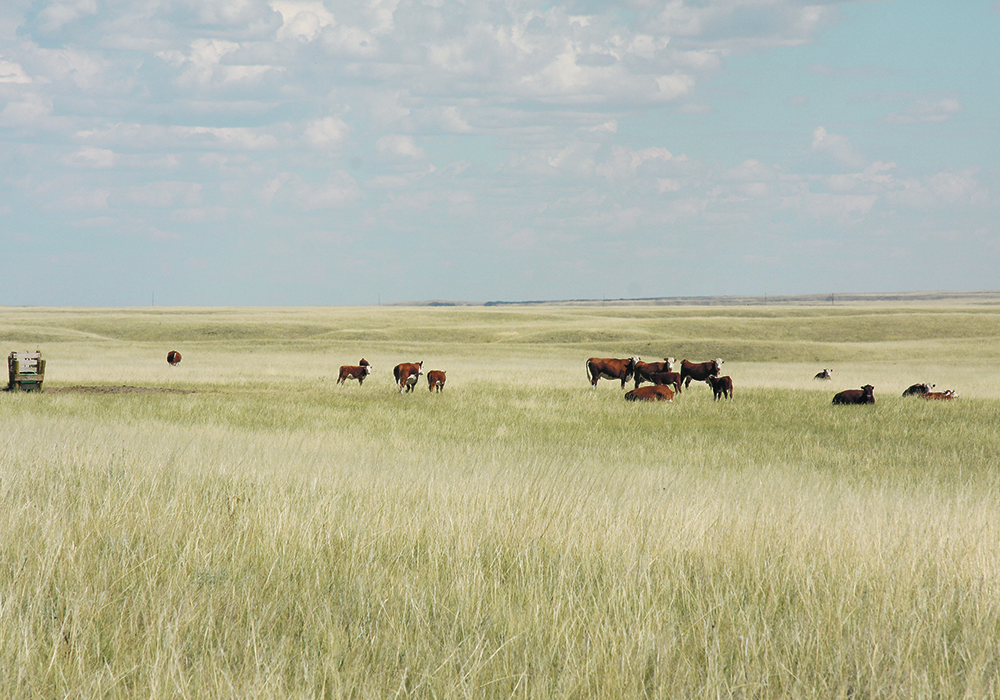Cattle producers tell House agriculture committee the country needs land use strategy to preserve its native grasslands
Stopping grassland conversion into cropland or other purposes is critical if the agricultural industry is to meet its environmental commitments, says the Canadian Cattlemen’s Association.
Duane Thompson, a Saskatchewan producer and chair of the CCA’s environment committee, told the federal standing committee on agriculture that a national land-use strategy could help protect the environment while encouraging agricultural production.
He said data from Nature Conservancy of Canada shows an average yearly loss of 148,000 acres of native grasslands due to conversion, not including tame pastures and hay lands that are also being lost.
Read Also

India slaps 30 per cent import duty on yellow peas
India has imposed a 30 per cent duty on yellow pea imports with a bill of lading date on or after Nov. 1, 2025.
“In fact, a recent study by Nature United identified stopping this loss as the number one solution we have for nature climate solutions,” Thompson said.
He said post-BSE challenges saw a large land-use change, and grassland loss is now directly related to the shrinking cow herd.
Thompson said beef producers have less ability to manage risks compared to grain growers, who have more effective risk management tools and cost-shared premiums.
“These factors lead to business decisions where farmers and ranchers convert land from pastures to crop land, or perhaps sell for other purposes,” he said.
Increasing demand for biofuels and high crop prices offer other reasons to change and CCA agrees it is up to landowners to make their own decisions.
“However, we, along with our conservation partners, as you’ve previously heard, understand the immense environmental value that goes with keeping grasslands in production in Canada, such as carbon sequestration and immense biodiversity, including our species at risk,” Thompson said. “We would suggest the development and adoption of a comprehensive land use strategy by all levels of government and stakeholders to strike a balance between urban expansion, agricultural production and environmental protection.”
Tools to maintain grasslands include a natural perennial forage conversion program, term easements, more funding for programs that support best management practices and rewarding producers for carbon sequestration and biodiversity, water and wetland conservation, he added.
Liberal committee member Tim Louis asked what the government could do to help preserve grass.
Thompson said the priority is to figure out how to promote stabilization and prevent further conversion.
He suggested programs that show the value of carbon sequestration on grasslands could show producers that there is more value in leaving it rather than seeding a crop.
Fawn Jackson, CCA’s director of policy and international affairs, said industry is working on details of how to quantify carbon storage.
She said it’s already known that about 1.5 billion tonnes of carbon are stored in the grasslands that beef producers manage, and best management practices can add more but there is still work to be done.
“What we do know is when lands are converted, if it’s converted into a cityscape or if it’s converted into some other agricultural use, we know about 30 to 40 percent of the carbon is lost,” she said.
Conservative MP Dave Epp asked Thompson, and other witnesses from the crops sector, their thoughts on linking environmental goals and business risk management goals.
Thompson said that’s a challenge because agriculture is a system.
“I think some of the unintended consequences of having cross compliance across programs is that producers don’t have the flexibility to optimize their system,” he said, adding they might manage according to the programs instead.
He also said that any programs must be careful not to discourage those who already have well-managed, sustainable systems.
Jackson added that, at this stage, the main priority of keeping grasslands in grass is more important than the details of tools or programs.
“If I’m being honest that’s the goal we have the most challenge with and we need the most help from government on,” she said.
Francis Drouin, a Liberal MP, asked what role the government could play considering that land-use planning is a provincial matter.
Jackson said all the stakeholders have to be at the table because policies interact.
“We talk a lot about grassland conversion, but we need to really look at it from an agriculture loss perspective,” she said. “We lost 1.4 million acres of agricultural land in the last census. These are serious problems when we are thinking of environmental deliverables and world food security right now.”
















